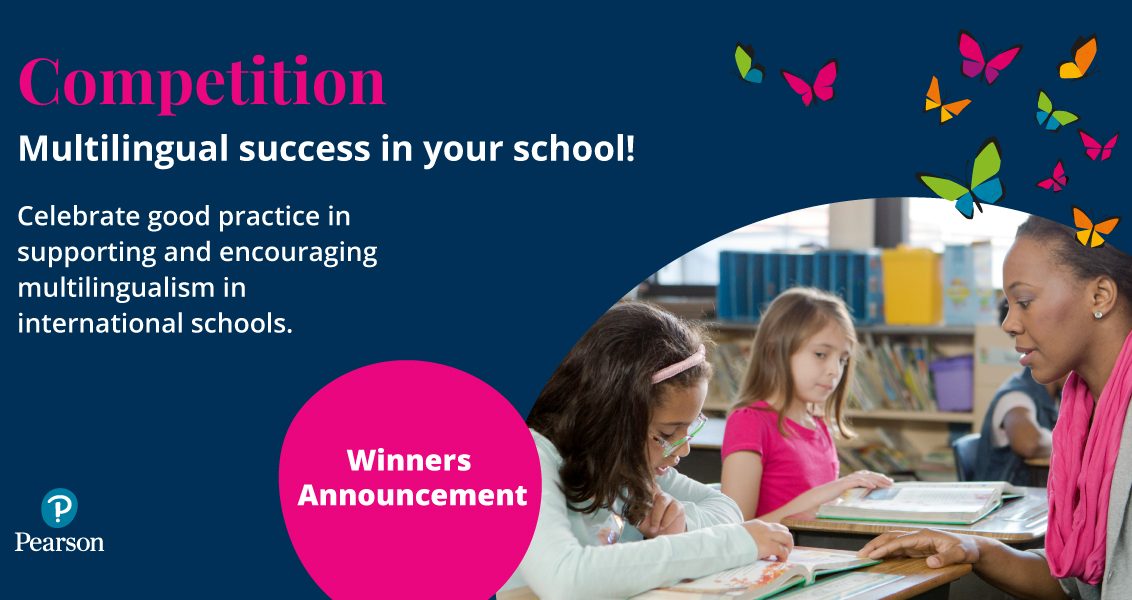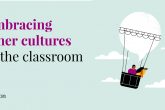
Having recently announced the winning schools in our Multilingual success in your school competition, we’re delighted to present the first in a series of blog posts, from our runners up and overall winner, in which we find out a bit more about their schools, their winning projects and the impact on their students.
First up is our second place winner, Ágora Lledó International School in Spain. Their Knowing the past to understand the future project tasked students with researching the Spanish Civil War in their mother tongues and producing a multilingual mural. Our judges agreed the project was a powerful way to encourage recognition and appreciation of the different languages spoken in the classroom and discussion whilst also deepening students’ understanding of the war and how this can influence the future.
Over to Marta Ripolles to tell us more:
Congratulations Marta! Please tell us more about your school
Ágora Lledó International School is located in Castellón de la Plana in Spain. We have around 800 students from Kindergarten passing through Primary until Secondary. So, the students age from 1 to 17 years old.
We are an international school, not only because we have students from many different nationalities but also because our main objective is to form students that are ready to face the world where they live, a global world, and become world citizens.
Our curricula apart from the compulsory matters such as English, Lengua castellana, Mathematics, Valencià, Science, Music, Art and Physical Education also contains Orquesta, Deutch and Sports. Apart from English language itself, there are three more subjects which are taught in English: Arts, Social Science and Natural Science. When teaching these subjects we apply CLIL methodology that allows students to learn language while they learn content.
What is your role and how long have you been at the school?
I am a primary teacher. My students are 12 years old so they are in 6th grade. I teach Social Science in English and apply CLIL (Content and Language Integrated Learning) methodology which consists of teaching content in a foreign language (English in my case) that’s different from the students ́ mother tongue.
Therefore, my classes have a double objective: teaching content and also language. Although the main language used in class is English, my students can use their mother tongue when necessary as it is essential that they understand the content.
This is my first year working in Ágora Lledó International School and it is also my first time as a primary teacher.
What did you do before you joined your school?
I’ve always liked teaching and four years ago I decided to become a primary teacher.
I worked as a secondary teacher in a high school two years ago and although I enjoyed the experience it is not comparable to working in a school like Lledó which offers so many useful resources and where children have a wide range of opportunities to acquire a meaningful learning.
As a matter of fact I am a pharmacist who did not feel fulfilled with her job and instead of resigned myself to spending my life on doing a job that would not make me happy, I decided to change track. Becoming a teacher was one of the best decisions I have ever made.
Ágora Lledó International school has given me the opportunity to develop myself as a professional and being able to apply my knowledge so that others can learn is amazing. Moreover, my students are not the only ones who learn everyday – I do it with them too!
Tell us more about how you approach multilingualism in your school and your winning project
Our curriculum has a linguistic project which involves five languages: Spanish, English, German, French and Valencià. For us, a multilingual student has developed essential skills that enable them to cope in any part of the world not just due to the wide knowledge of languages that they have gained but also because of their ability to comprehend diversity and get along in a globalised world.
Multilingual students have an open view of the world and its citizens which allows them to live together in our globalised world.
The activity that we carried out to encourage multilingualism involved making a mural about different aspects of the civil war and Francoism using the different languages present in the classroom (English, Spanish, Valencià, German, Romanian and Russian).
Students had to investigate different aspects of the civil war such as the bomb shelters, ration cards, the post-war and the two sides of the war, with the objective of knowing real stories and testimonies and sharing them later with the rest of their classmates.
The objectives of this project were not only to investigate, collect information and synthesize content but also to develop multilingualism and multiculturalism since, apart from using different languages to do the activity, foreign students who did not know much about that part of our history, would gain knowledge and be immersed deeply in the Spanish culture by listening to their classmates’ stories. They also had to write part of their stories in both English and their mother tongue.
The activity had a very positive for the students since they have enriched their vocabulary and got more fluency in speaking. Moreover, they have learned content in a motivating way which allows them to acquire meaningful knowledge.
It has also been a great way for the students to understand that we live in a multicultural society where diversity and difference are synonyms of enrichment and culture.
What are your next steps for delivering multilingual success in your school?
Sharing my experience with my coworkers is encouraging them to work in the same direction, planning projects where multilingualism is at the core of their activities. I would like to work on a common project with my coworkers to continue to encourage multilingualism in our school in a cooperative way which will be more enriching for the whole educational community.
And finally, if you could offer one piece of advice to a teacher entering international education, what would it be?
It is overwhelming for me giving any advice since I am a teacher with short experience, however,
I would say that when you work with passion and love your job, you can achieve anything you set your mind to and your students will be the ones who will benefit from your effort which is any teacher’s main objective!
Thank you so much for sharing your story Marta!
Incase you missed anything, read more about the “Multilingual success in your school” competition:
Winners Announcement: Multilingual success in your school competition!
Multilingual success in your school competition shortlist
Read more Multilingualism posts
Multilingual learners – webinar resources
Debunking the ‘immersion only’ myth
Is there a potential pandemic of language loss in international schools?
Input matters: supporting children’s harmonious bilingual development

